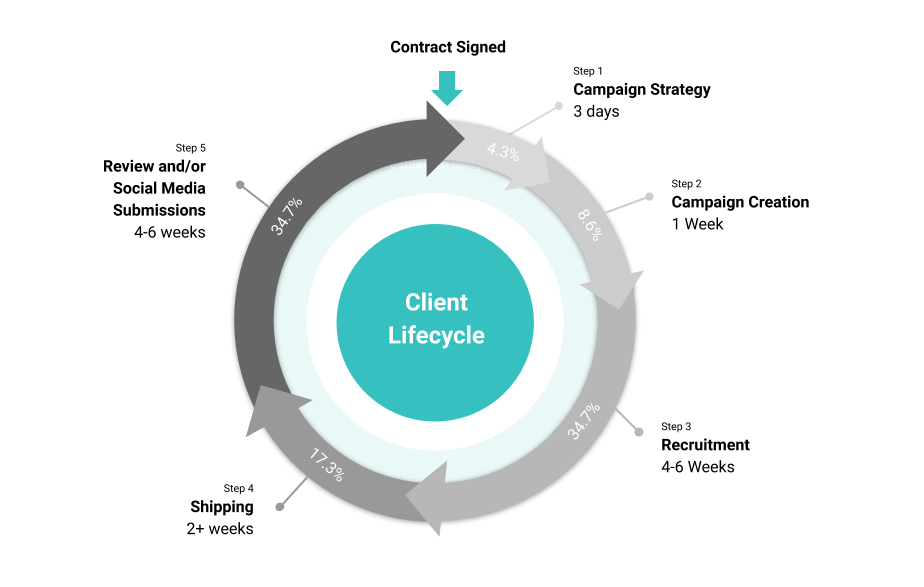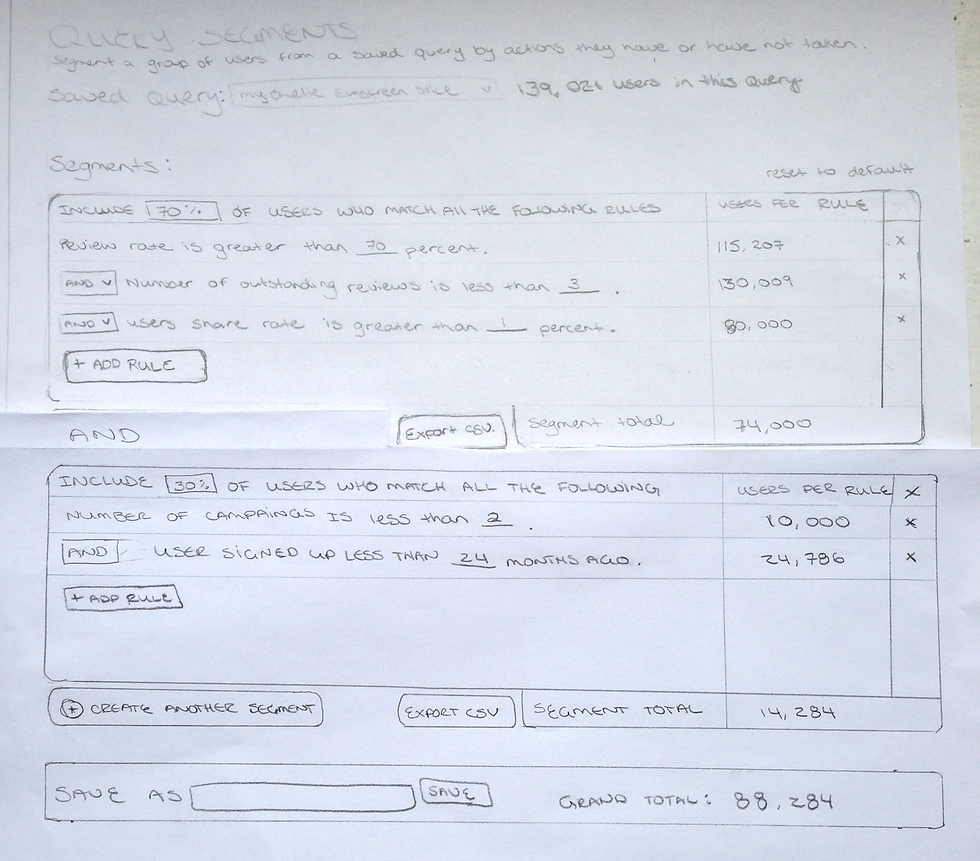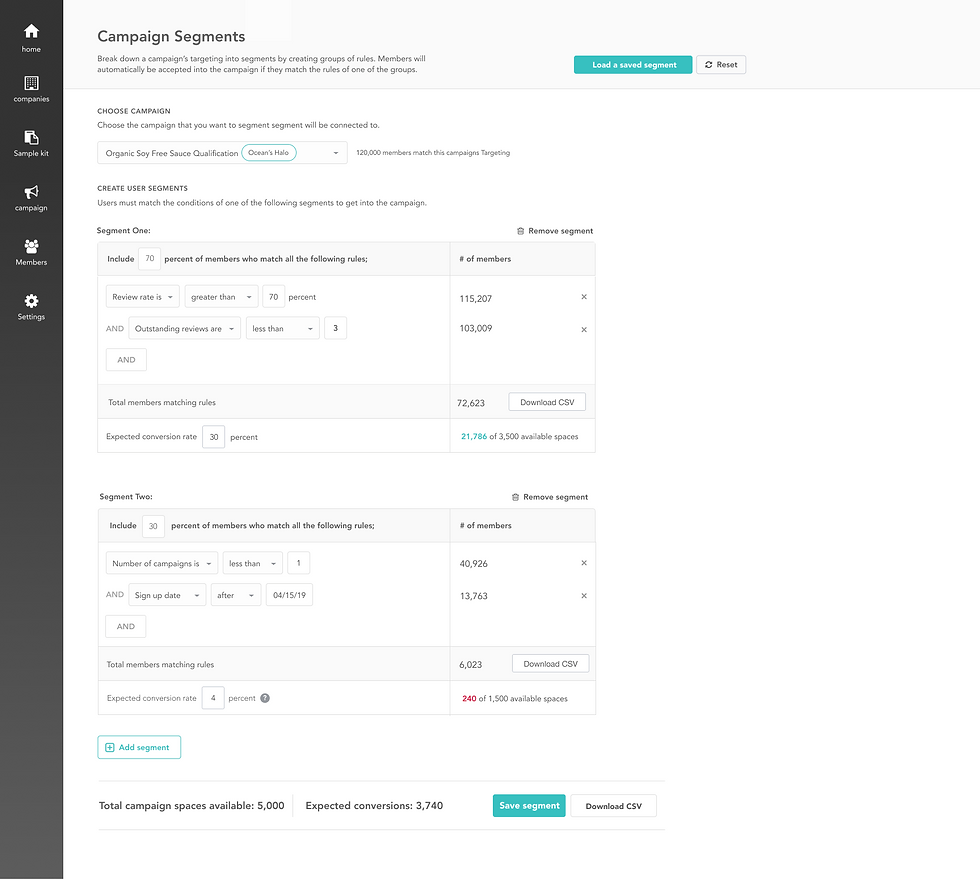Campaign Queries and Segmenting - Social Nature
- jennyminke
- Nov 24, 2021
- 5 min read
Updated: Sep 16
About Social Nature
Social Nature is a company on a mission to help more people #trynatural and help better-for-you brands reach their target consumer. We offer micro influencer marketing, review campaigns, product sampling and digital data collection through an innovative digital platform. Our automation allows them to run large national marketing programs at scale. Our platform has a community of members who can opt in to participate in our various campaigns.
Company objective
One of our company's yearly objectives was to double our revenue. In the previous quarter, we had hit an KR of renewing 80% of customers within 6 months. Our goal for this quarter was to figure out how we could take advantage of our high renewal rate to drive more company revenue.
The Opportunity
Our current process to execute campaigns was extremely long and very manual. Campaign timelines were on average 4 month, and a single campaign took almost year. It was also hard to predict how long a total campaign would take, and clients often complained about the lack of transparency and inability to plan around our campaigns.
Research
In order to understand the best place to invest resources, we first needed to deeply understand the campaign lifecycle from our Member's perspective as well as our internal team's processes.
RESEARCH GOALS:
What is our current average campaign timeline?
What is causing the lack of predictability in our campaign timelines? What are the blockers?
Are there ways we can speed up the campaigns timelines?
We hypothesized that our user's expectations from other online delivery experiences would impact their expectations for our shipping and delivery. As well, we suspected consumers are overloaded with information and it was likely new members were to forget where their sample came from by the time it arrived in the mail months later. Using Google Analytics data and results of usability testing, we created a user journey map to identify key drop off areas and pain points from community members.

Our benchmark timeframe from when a community member expressed interest in a Social Nature campaign to when we confirmed they were accepted into the campaign was, on average, 2 months. We were also able to leverage data from a previous research survey we sent to community members with recent incomplete campaigns. There was a clear trend:
30% of Members didn't complete their campaign because they 'forgot'.
An additional 7.5% stated they didn't even remember who or what 'Social Nature' was.
Internally, I shadowed our campaign manager for a week to learn the entire campaign process and identify areas of waste. It became apparent that the biggest bottleneck was our recruitment phase. And, based on our growth trajectory, the recruitment timeline was projected to double.

After learning all the process needed to get the campaign ready to recruit and how to recruit members, we uncovered 4 areas that had significant opportunity.
She had to manually write out the types of members she wanted to recruit, then provide an attribute list to our development team to run a query. Dev team required 72 hours to complete the query.
She would now create the recruitment emails, first she would recruit member to opt-in to the campaign. Next she would recruit from members who already opted-in and were invited to apply to the campaign.
She had to then had to export the opt-in CSV, upload it into excel, and use excel to further filter and breakdown the list into sub-segments.
She had to download and filter a list of members who had opted into the campaign, each time we wanted to see if she had successfully filled the campaign.
She could not start shipping the products to the customers until the campaign was completely full. Meaning, a member who opted-in on day one, could be waiting up to 6 weeks until they found out they were accepted into the campaign, and another 2 weeks to physically receive their sample.
Planning
After conducting the research, we synthesized the findings and documented our campaign life-cycle from both a operations team and member point of view.

Working closely with our lead developer and internal stakeholders, the ideal internal process was mapped out and presented to the operations team, development team and CEO for feedback and approvals.


Additionally the changes to the community member experience was documented, and shared with the CEO, Operations, Community Marketing and Development team.

Once the entire team was confident in the proposed flow, we moved on to design.
The project was broken down into 2 primary features.
1. Internal Targeting Tool
2. Campaign Segmenting
Design
The first piece of the new flow was allowing the operations team to build their own queries to target our members based on our clients requirements. We knew at a minimum this would reduce the timeline by 3 days because they would no longer have to request a developer to run a queries on their behalf.
This first phase would also reduce the time it took the Campaign Manager to check how full each campaign is, by using the tool to view data by user events.
The Query Builder gave our internal team a simple UI that allowed them to search and filter community members based on a variety of attributes. This was also a prerequisite to the more impactful second phase of this project.

The second phase of this project was to allow the members to instantly be notified if they are in the campaign. This would removed 3 steps from the member flow. In order to accomplish this, we needed to give our ops team a way to add segments with rules to each campaign. This meant they could control how many new, engaged or specialized members (such as micro influencers) would be allowed into each campaign.

The prototyping phase of this project was extensive and went through many iterations of various fidelity before landing on the ideal interface.

Testing
Much testing was done internally to flush out any mistakes, missing details and ensure this complex feature was usable by any staff member. Being a small team we wanted to ensure that any employee could cover a sick day or vacation and use the tool with confidence. Some iterations that were made after testing were: - Loading a saved segment. Segmenting is often repeated across client campaigns and even different companies. Being able to load a saved segment would be an additional time saver for the team. - Comparing segment members to the available spaces in the campaign. This small addition meant that the team didn't have to do the math manually themselves, removing room for error. - Conversion rate. Knowing the available pool of members it key but not all members will convert. We added a input for expected conversion rate.
Successes
With the release of this project we were able to;
Remove 3 steps for the majority of users, reducing a 20% drop off to less then 5%.
Time to fill a campaign was reduced from 4-6 weeks to 3 weeks or less.
Almost eliminated the need to send manual recruitment emails.
Time for a member to complete their task went from 4-6 weeks to less then 4 weeks.
Saw an increase in member's task completion by 5%.
Eliminated the need to hire an additional Campaign Manager
The entire team was blown away with these results and this project exceeded expectations. In fact, a month after release, 3 campaigns filled themselves in less then 2 weeks, without any need for manual recruitment.



Comments